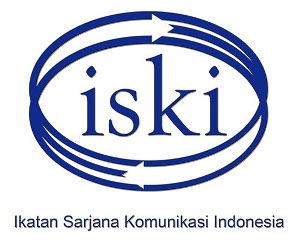Analisis Konten Pesan-Pesan Kesehatan Mental di Dalam Musik Populer
Abstract
Masalah kesehatan mental merupakan sebuah permasalahan yang sangat rawan di antara kaum muda, dengan jumlah penderita pada kaum muda mengalami kenaikan selama dekade 2000-an dan 2010-an, namun upaya untuk mencari bantuan mengalami stagnasi. Dengan begitu, musik dapat dijadikan sebagai salah satu upaya untuk menanggulangi dan juga menangani masalah kesehatan mental. Penelitian ini menggunakan metode analisis kuantitatif untuk menganalisis keberadaan pesan-pesan dan referensi terhadap masalah kesehatan mental di dalam musik populer, dengan tujuan untuk mencari tahu betapa banyaknya lagu yang mereferensikan kesehatan mental dan apakah terdapat perkembangan atau pengurangan dari referensi ini seiring tahun. Analisis ini dilakukan terhadap 25 lagu paling populer pada tahunnya menurut daftar yang dikeluarkan oleh majalah Billboard yang berjudul Billboard Year-End Hot 100 Singles dari tahun 2001, 2006, 2016, dan 2021. Sebuah coding book kemudian dibuat sebagai kerangka untuk menganalisis keberadaan pesan atau referensi masalah kesehatan mental di dalam tiap lagu. Data kemudian dianalisis menggunakan analisis frekuensi dan uji One-Way Anova untuk menguji linearitas menggunakan perangkat lunak SPSS. Dari hasil analisis ini ditemukan bahwa 53 dari 125 lagu mengandung pesan atau referensi masalah kesehatan mental. Hasil uji juga menunjukan bahwa tidak ada tren linear dari tahun 2001 hingga 2021, dimana terjadi penurunan jumlah referensi dari tahun 2001 ke 2006, kenaikan dari tahun 2006 hingga 2016, lalu penurunan kembali pada tahun 2021. Salah satu penjelasan terhadap perkembangan yang tidak menentu ini bisa dilihat dari kejadian-kejadian dunia seperti resesi ekonomi dan pandemi yang mempengaruhi keadaan mental masyarakat. Akan tetapi, kenaikan jumlah referensi dari tahun 2008 hingga 2016 bisa dilihat dari meningkatnya pula risiko masalah kesehatan mental di masyarakat.
Keywords
Full Text:
PDFReferences
American Psychiatric Association. (2013). Diagnostic and Statistical Manual of Mental Disorders. 5th ed. American Psychiatric Association.
American Psychiatric Association. (2018). What is mental illness? Diambil dari: https://www.psychiatry.org/patients-families/what-is-mental-illness
Blady, S. (2021). BTS from ‘N. O’to ‘ON’and BEyond: Innovation in effective mental health messaging and modelling. Asia Marketing Journal, 22(4), 117-149.
Calhoun, A. J., & Gold, J. A. (2020). “I feel like I know them”: The positive effect of celebrity self-disclosure of mental illness. Academic Psychiatry, 44(2), 237-241.
Coppersmith, G., Dredze, M., Harman, C., & Hollingshead, K. (2015). From ADHD to SAD: Analyzing the language of mental health on Twitter through self-reported diagnoses. In Proceedings of the 2nd workshop on computational linguistics and clinical psychology: from linguistic signal to clinical reality (pp. 1-10).
De Choudhury, M., & De, S. (2014, May). Mental health discourse on reddit: Self-disclosure, social support, and anonymity. In Eighth international AAAI conference on weblogs and social media.
Douce, L. A., & Keeling, R. P. (2014). A strategic primer on college student mental health. American Council on Education.
Fokkinga S. (2019). Negative Emotion Typology. Dissertation. Delft University of Technology. Diakses pada 10 April 2022: https://emotiontypology.com
Gkotsis, G., Oellrich, A., Velupillai, S., Liakata, M., Hubbard, T. J., Dobson, R. J., & Dutta, R. (2017). Characterisation of mental health conditions in social media using Informed Deep Learning. Scientific reports, 7(1), 1-11.
Jelenchick, L. A., Eickhoff, J. C., & Moreno, M. A. (2013). “Facebook depression?” Social networking site use and depression in older adolescents. Journal of Adolescent Health, 52(1), 128-130.
Kapidzic, S. (2013). Narcissism as a predictor of motivations behind Facebook profile picture selection. Cyberpsychology, Behavior, and Social Networking, 16(1), 14-19.
Koops, L. H., & Kuebel, C. R. (2021). Self-reported mental health and mental illness among university music students in the United States. Research Studies in Music Education, 43(2), 129-143.
Kresovich, A., Collins, M. K. R., Riffe, D., & Carpentier, F. R. D. (2021). A content analysis of mental health discourse in popular rap music. JAMA pediatrics, 175(3), 286-292.
Kross, E., Verduyn, P., Demiralp, E., Park, J., Lee, D. S., Lin, N., Shablack, H., Jonides, J. and Ybarra, O. (2013). Facebook use predicts declines in subjective well-being in young adults. PloS one, 8(8), e69841
Mojtabai, R., Olfson, M., & Han, B. (2016). National trends in the prevalence and treatment of depression in adolescents and young adults. Pediatrics, 138(6).
Morganstein, J. C., & Ursano, R. J. (2020). Ecological disasters and mental health: causes, consequences, and interventions. Frontiers in psychiatry, 1.
Napier, K., & Shamir, L. (2018). Quantitative sentiment analysis of lyrics in popular music. Journal of Popular Music Studies, 30(4), 161-176.
Pantic, I. (2014). Online social networking and mental health. Cyberpsychology, Behavior, and Social Networking, 17(10), 652-657.
Pantic, I., Damjanovic, A., Todorovic, J., Topalovic, D., Bojovic-Jovic, D., Ristic, S., & Pantic, S. (2012). Association between online social networking and depression in high school students: behavioral physiology viewpoint. Psychiatria Danubina, 24(1.), 90-93.
Papinczak, Z. E., Dingle, G. A., Stoyanov, S. R., Hides, L., & Zelenko, O. (2015). Young people's uses of music for well-being. Journal of Youth Studies, 18(9), 1119-1134.
Pfefferbaum, B., & North, C. S. (2020). Mental health and the Covid-19 pandemic. New England Journal of Medicine, 383(6), 510-512.
Sampasa-Kanyinga, H., & Lewis, R. F. (2015). Frequent use of social networking sites is associated with poor psychological functioning among children and adolescents. Cyberpsychology, Behavior, and Social Networking, 18(7), 380-385.
Schneider, D., Harknett, K., & McLanahan, S. (2016). Intimate partner violence in the great recession. Demography, 53(2), 471-505.
Statistica. (2020) Favorite music genres among consumers in the United States as of July 2018, by age group [graph]. Published June 27, 2019. Diakses 9 April 2022.
Sule, A., & Inkster, B. (2015). Kendrick Lamar, street poet of mental health. The Lancet Psychiatry, 2(6), 496-497.
Szekeres, A., & Tisljár, R. (2013). Narcissism in the world of Facebook. An evolutionary psychopathological interpretation. Psychiatria Hungarica: A Magyar Pszichiatriai Tarsasag Tudomanyos Folyoirata, 28(4), 440-453.
Whiteford, H. A., Degenhardt, L., Rehm, J., Baxter, A. J., Ferrari, A. J., Erskine, H. E., Charlson, F.J., Norman, R.E., Flaxman, A.D., Johns, N.. & Burstein, R., (2013). Global burden of disease attributable to mental and substance use disorders: findings from the Global Burden of Disease Study 2010. The lancet, 382(9904), 1575-1586.
Wongkoblap, A., Vadillo, M. A., & Curcin, V. (2017). Researching mental health disorders in the era of social media: systematic review. Journal of medical Internet research, 19(6), e228.
DOI: http://dx.doi.org/10.30813/s:jk.v16i2.3484
Refbacks
- There are currently no refbacks.
Copyright (c) 2022 Kimi Mikael

This work is licensed under a Creative Commons Attribution-ShareAlike 4.0 International License.
Publisher
Editorial Board SEMIOTIKA: Jurnal Komunikasi
Department of Communication
Faculty of Social Science and Humanities
"UNIVERSITAS BUNDA MULIA"
Lodan Raya St No.2, North Jakarta 14430
Phone: +62 21 692 9090 ext. 348
Email: SEMIOTIKA@ubm.ac.id













